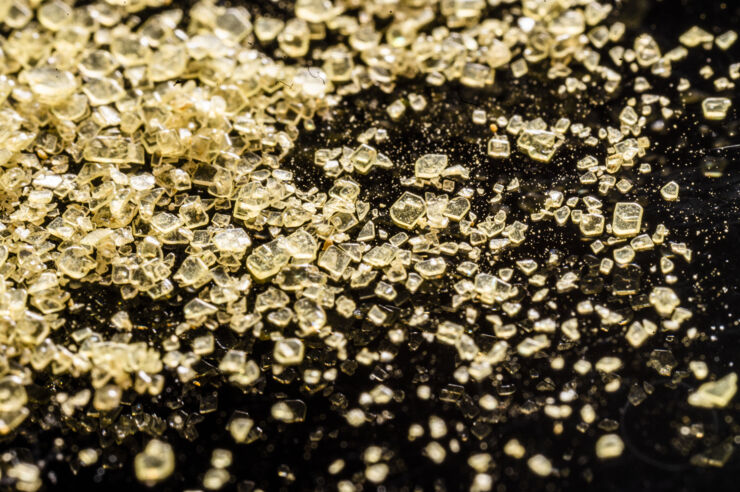Basic research is needed because solar energy could grow to be one of the most important fossil-free and eco-friendly sources of electricity. Unless it doesn't work as advertised for taxpayers who fund it.
Silicon-based solar cells currently in use have a hypothetical upper limit of approximately 33 percent of the energy in sunlight that can be converted to electricity, known as the Shockley-Queisser limit. This is because the packets of light, or photons, in sunlight have an energy that is either too low to be absorbed by the solar cell, or too high, so that part of the energy is dissipated to heat. In the real world, efficiency of modern solar cells is about 20 percent and drops from there.

A monoclinic crystal of a polyene, diphenyl hexatriene (DPH) used in the study. Credit: Thor Balkhed
A new study has discovered what happens during a phenomenon in molecular photophysics known as singlet fission - which can help solve the efficiency problem - that leads to lost energy and makes it not viable. Part of the energy disappears in the form of an intermediate bright state, and this is a problem that must be solved to achieve efficient singlet fission. The discovery of where the energy goes helps understand how to to potentially get higher solar cell efficiency - from the current potential of 33 percent to over 40 percent.
The researchers used a refined magneto-optical transient method to identify the location of energy loss. This technique has unique advantages in that it can examine the 'fingerprint' of the singlet fission reaction at a nanosecond timescale. A monoclinic crystal of a polyene, diphenyl hexatriene (DPH), was used in this study. However, this new technique can be used to study singlet fission in a broader material library.
"Singlet fission takes place in less than a nanosecond, and this makes it extremely difficult to measure. Our discovery allows us to open the black box and see where the energy goes during the reaction. In this way we will eventually be able to optimise the material to increase the efficiency of solar cells", says Yuttapoom Puttisong, senior lecturer in the Department of Physics, Chemistry and Biology at Linköping University.






Comments